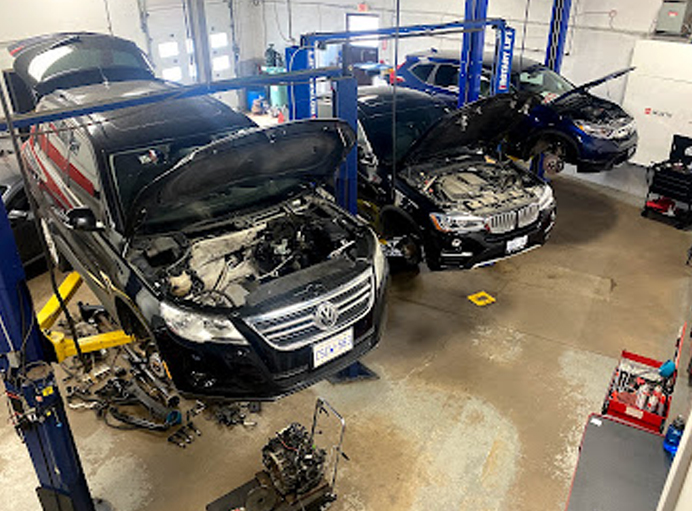
The Role of Computer Diagnostics in Modern Auto Repairs
Not long ago, mechanics relied heavily on experience, sound, and physical inspections to detect vehicle problems. Today, vehicles are equipped with advanced computer systems that control everything from the engine to the brakes and even the air conditioning. With this technology, diagnosing car issues has changed dramatically.
Computer diagnostics now play a vital role in modern auto repairs. For Mississauga drivers, this means faster, more accurate detection of problems, fewer unnecessary repairs, and cost savings over time. In this article, we’ll explore what computer diagnostics are, how they work, and why they are essential for today’s vehicles.
What Are Computer Diagnostics?
Modern cars are essentially computers on wheels. They contain numerous sensors, processors, and control modules that monitor performance and safety.
When a warning light comes on, such as “Check Engine,” it signals that the car’s onboard computer has detected an issue. Computer diagnostics involve using specialized tools to read error codes and interpret the data.
Key Components of Diagnostics
Onboard Diagnostic System (OBD-II): Standardized across vehicles, this system stores error codes when problems occur.
Diagnostic Trouble Codes (DTCs): These codes provide clues about which system or part is malfunctioning.
Scanner Tools: Mechanics connect a diagnostic scanner to the OBD port to retrieve and analyze the codes.
Live Data Feeds: Beyond error codes, scanners show real-time data such as engine temperature, fuel usage, and emissions output.
Diagnostics don’t just confirm a problem—they often reveal underlying causes that aren’t obvious during a manual inspection.
Why Computer Diagnostics Are Important
Computer diagnostics provide several key benefits for drivers and mechanics.
Accuracy and Speed
Instead of guessing, mechanics can pinpoint issues quickly. This reduces labor costs and prevents trial-and-error repairs.
Preventive Maintenance
Diagnostics can catch small problems early before they grow into major, expensive repairs. For example, detecting a failing sensor early can prevent engine damage.
Comprehensive Insight
With dozens of interconnected systems, diagnostics can uncover issues with:
Engine performance
Transmission health
Fuel and exhaust systems
Brake and ABS systems
Electrical circuits
Emissions control
Supporting Modern Technology
Advanced features such as adaptive cruise control, lane assist, and hybrid drivetrains all rely on computer monitoring. Without diagnostics, these systems would be nearly impossible to service properly.
Steps in the Diagnostic Process
If you’ve ever wondered what happens when your car goes in for diagnostics, here’s the typical process:
Step 1: Initial Assessment
The technician asks about symptoms you’ve noticed, such as noises, warning lights, or performance issues.
Step 2: Connecting the Scanner
A diagnostic scanner is connected to the OBD-II port, usually located under the dashboard.
Step 3: Reading the Codes
The scanner retrieves any stored trouble codes, which point to affected systems or components.
Step 4: Analyzing Live Data
The technician reviews real-time data to see how the car is performing under different conditions.
Step 5: Confirming the Diagnosis
Codes don’t always tell the full story. Mechanics may run additional tests, inspect parts, or perform road tests to confirm the issue.
Step 6: Repair and Reset
Once repairs are complete, the codes are cleared, and the system is retested to ensure the problem is resolved.
Frequently Asked Questions
What does the “Check Engine” light mean?
It means your car’s computer has detected a problem. It could be minor, like a loose gas cap, or more serious, like an oxygen sensor failure.
Can I drive with the check engine light on?
If the light is steady, it’s usually safe for short trips until you can get it checked. If it’s flashing, stop driving immediately and have the car inspected.
How much do diagnostics cost?
Diagnostic costs vary, but many shops charge a flat fee for scanning and interpretation. This fee often saves money by preventing unnecessary repairs.
Do I need diagnostics even if my car feels fine?
Yes. Regular diagnostics can reveal hidden issues that aren’t obvious yet, preventing breakdowns and saving money in the long run.
Are diagnostics only for engine problems?
No. Modern diagnostics can detect issues across many systems, including brakes, transmission, electrical, and emissions controls.
Conclusion
Computer diagnostics have transformed modern auto repairs. They allow mechanics to identify problems quickly, accurately, and efficiently, ensuring that repairs are targeted and effective. For Mississauga drivers, relying on diagnostic technology means better performance, fewer surprises, and peace of mind knowing their car is in good health.
Whether it’s a glowing check engine light or preventive maintenance, computer diagnostics are an essential step in keeping today’s vehicles safe and reliable.